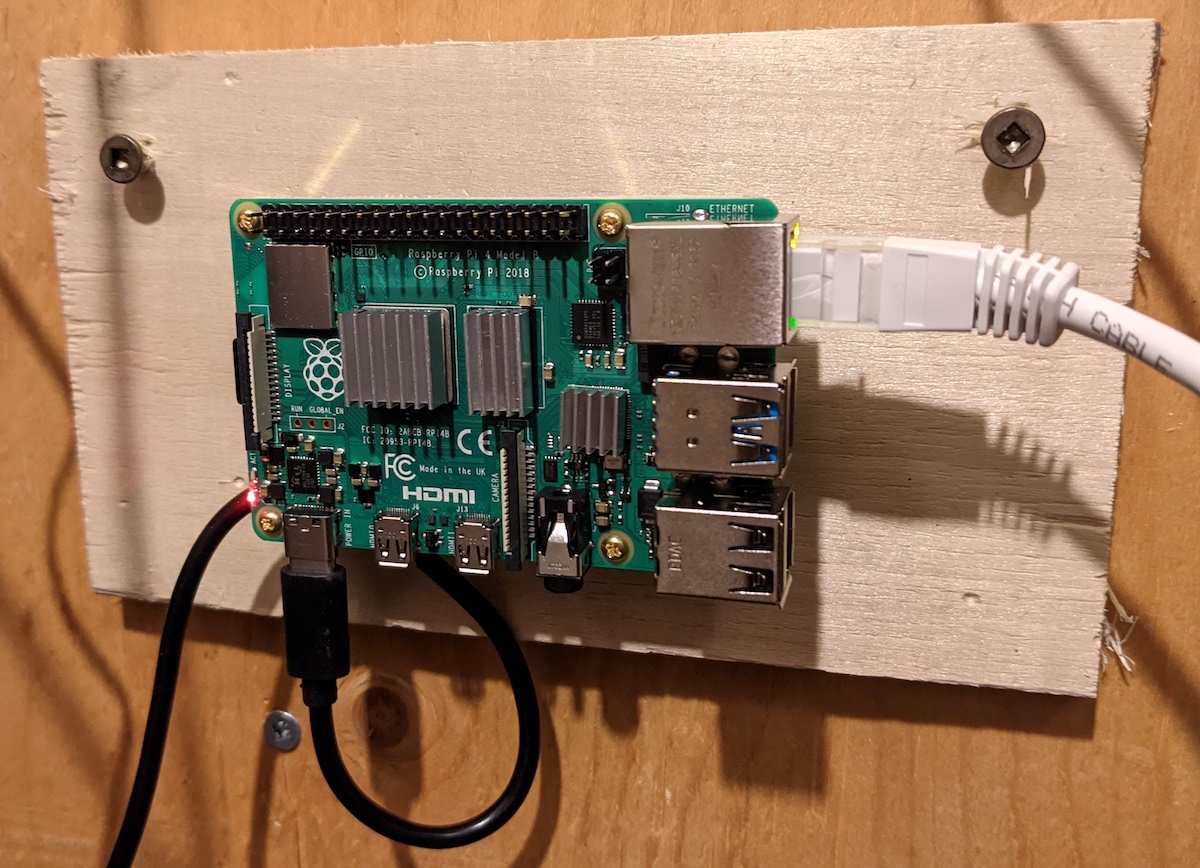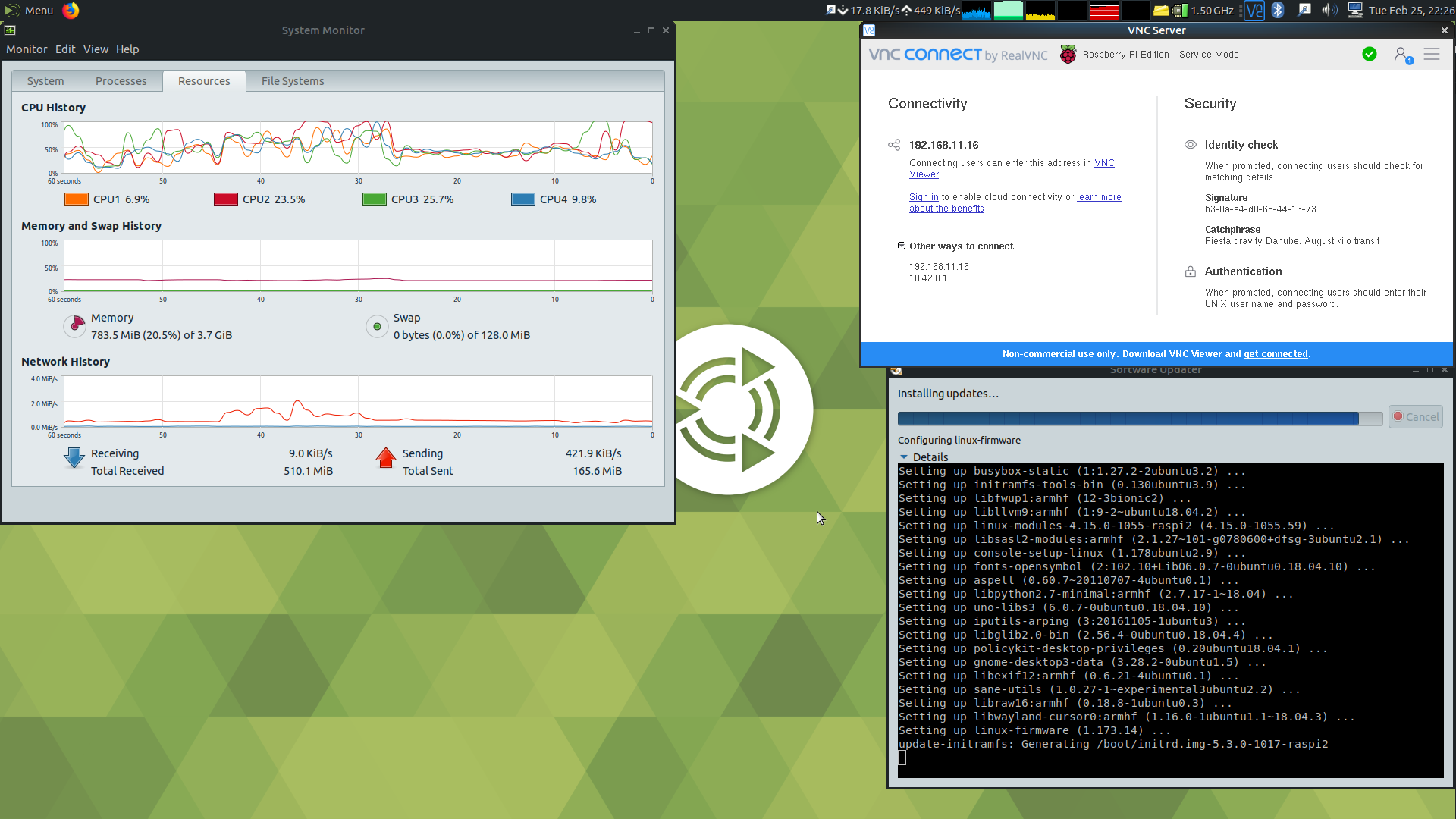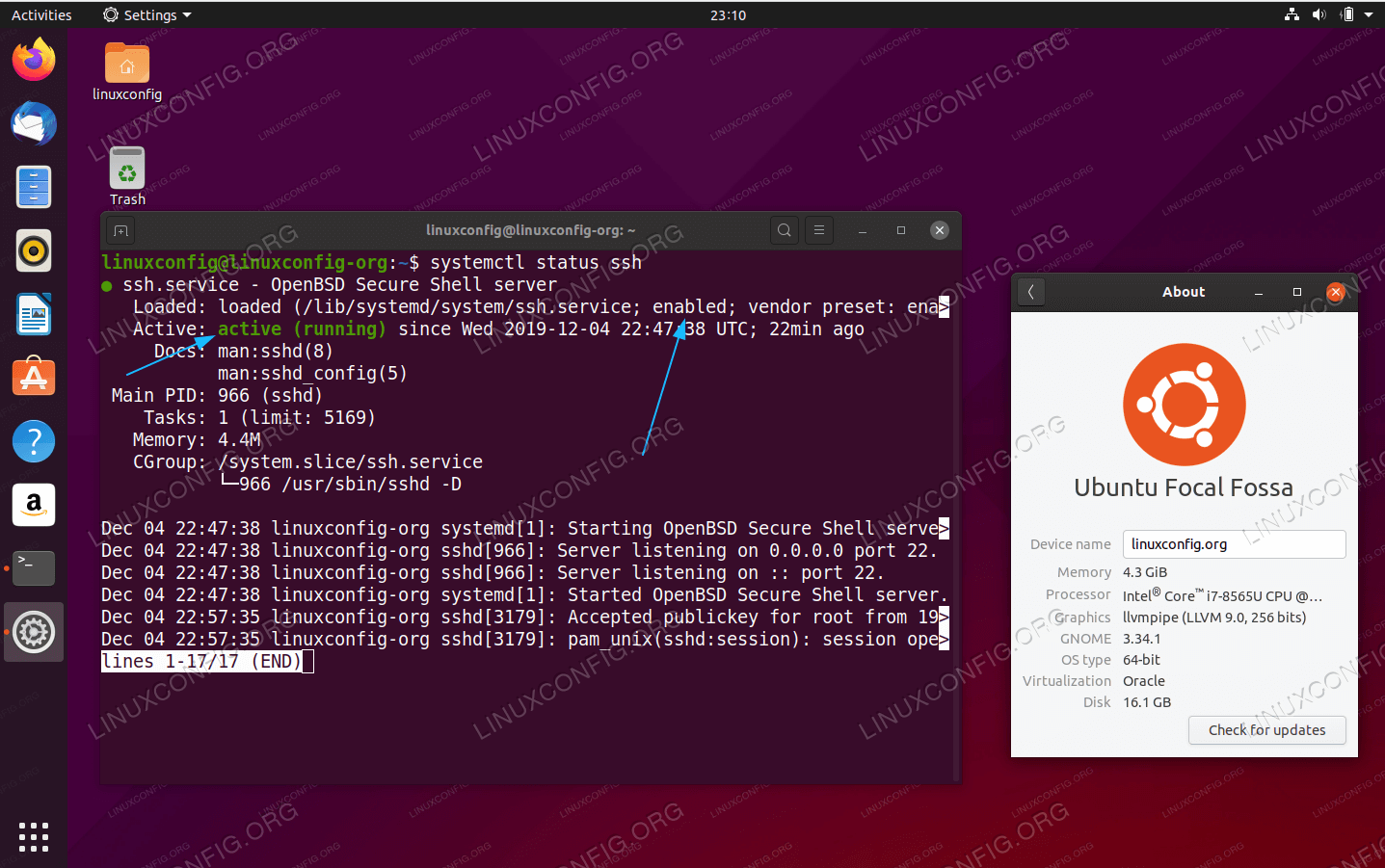Getting a good look at your distant devices, those little internet-connected gadgets, can feel like a big deal, especially when they are out of sight. We are talking about keeping tabs on things far away, like sensors or small computers, using tools you might already have, perhaps a tiny Raspberry Pi or a machine running Ubuntu. This whole idea is about making sure you know what's happening with your electronics, even if they are in another room, or across town, or even further. You see, it's almost like having a watchful eye on your gear without actually being there, which is pretty neat.
This way of watching over things from a distance opens up a lot of possibilities for anyone who has a few devices scattered around. It could be for checking on the temperature in a shed, or seeing if a water pump is working right, or just making sure a little computer board is doing its job. So, this kind of setup helps you stay in the loop, giving you peace of mind about your equipment, no matter where it sits. It really helps to know that you can get information from your things whenever you want it, which is a very comforting thought.
We will talk about how you can use simple, readily available tools to make this happen, turning what seems like a tricky task into something quite straightforward. You will see how a small computer, like a Raspberry Pi, paired with a common operating system, such as Ubuntu, can become your eyes and ears for things that are not close by. It’s about setting up a system that keeps you informed, allowing you to react if something needs your attention, which is actually a rather smart way to manage your gadgets.
Table of Contents
- What is Remote IoT Monitoring?
- Why Connect with SSH?
- How to Get Files - Download on Ubuntu
- Is Raspberry Pi the Right Fit for Remote IoT?
- What About Ubuntu for Your IoT Setup?
- How Do We Put All This Together?
- What Are Some Common Uses for This?
What is Remote IoT Monitoring?
This idea of watching things from a distance, or "remote monitoring," is about getting information from devices that are not right next to you. Think of it like checking on a plant's soil moisture in your garden while you are inside your house, or seeing if the lights are on in a holiday cabin many miles away. It involves little gadgets that can sense things, like temperature or movement, and then send that information over the internet. So, it is about keeping an eye on your things, even when you are not physically present, which is quite useful for many situations.
Keeping an Eye on Distant Things - Remote IoT
When we talk about "IoT," we are referring to "Internet of Things," which is just a way of saying that everyday objects have a way to connect to the internet. These objects can collect data and share it. Putting "remote" in front of it means you are collecting that information from far away. So, if you have a sensor on a water pipe, for example, you could get updates about water flow sent to your phone or computer, even if you are on the other side of town. This really makes it easier to keep tabs on things, especially those that are hard to get to often, or that need constant checking for their proper operation.
This kind of setup helps people keep tabs on things that matter to them, whether it is for a home project or something for a small business. It is about getting updates and knowing what is happening without having to go and look yourself. You might use it to see if a machine is still running, or if a certain door has been opened, or even just to check the air quality in a room that is not often visited. Basically, it gives you a window into the state of your distant equipment, which can save you a lot of time and effort, you know.
- Eric Jacob Knight
- How Old Was Jb When He Sang Baby
- Love Island Couples Still Together
- Andy Garcias Net Worth
- Sarah Levy Husband
Why Connect with SSH?
When you need to get to a computer that is not sitting right in front of you, a method called "SSH" comes in handy. It stands for "Secure Shell," and it is a way to make a private, safe link between your computer and the one far away. Think of it like a secret tunnel that only you can use to send commands and get information back. This makes sure that no one else can listen in on what you are doing or mess with your distant machine. It is a very important tool for keeping your remote systems safe from prying eyes, too.
Secure Shell for Your Raspberry Pi
For a small computer like a Raspberry Pi, using SSH is often the first step to setting it up and working with it from another machine. You can send commands to it, just as if you were typing directly on the Pi itself, even if it is in another room or another building. This is how you can install new programs, change settings, or start different tasks on your Pi without ever having to plug in a screen or keyboard to it. It is incredibly convenient for managing your little computer, especially if it is tucked away somewhere, which is often the case for IoT projects, you see.
Using SSH means you do not need to be physically present with your Raspberry Pi to get things done. You can be at your desk, type a few words, and your Pi, wherever it is, will follow your instructions. This makes it a really good choice for anyone who has a Pi running a sensor or a monitoring task in a hard-to-reach spot. It also helps keep your information private as it travels across the network, which is a very good thing when dealing with any kind of data. So, for managing a remote setup, SSH is a core piece of the puzzle, basically.
How to Get Files - Download on Ubuntu
Getting files onto a computer, or "downloading," is something we all do often. When you are working with a system like Ubuntu, which is a popular computer operating system, there are a few simple ways to bring files over. You might be getting a new program, or perhaps some data that your remote device has collected. The process is usually quite straightforward, often involving a few clicks or a simple command typed into a text window. This is how you equip your Ubuntu system with what it needs to do its job, you know.
Grabbing What You Need - Download Basics
On an Ubuntu machine, whether it is a full desktop computer or a smaller version running on a Raspberry Pi, getting files is pretty easy. You can use a web browser to visit a website and click a button to save something. Or, if you are working from that SSH connection we talked about, you can use special commands to pull files directly from the internet. This is super handy if you need to install a new tool or update some software on your remote system. It helps keep your setup current and ready for whatever you need it to do, which is rather important for ongoing operations.
For example, you might need to get a new piece of software that helps with your remote monitoring tasks. You would use a command that tells your Ubuntu system to go fetch that software from a specific internet address. The system then brings the file over and puts it where it needs to go. This whole process is a basic but important part of keeping your remote setup running smoothly. It means you can add new features or fix issues without having to physically put a USB stick into the machine, which is a good thing for distant devices, of course.
Is Raspberry Pi the Right Fit for Remote IoT?
Many people wonder if a tiny computer like the Raspberry Pi is a good choice for watching things from afar. These little boards are quite small, use very little electricity, and do not cost much money. They are also quite capable of running different programs and connecting to other devices, like sensors or cameras. So, for many situations where you need a small, always-on computer to collect information and send it over the internet, a Raspberry Pi could be a really good answer. It is surprisingly powerful for its size, you know.
Tiny Computer, Big Ideas - Raspberry Pi for Monitoring
The Raspberry Pi is a favorite among those who like to build their own electronic projects, and it is a popular choice for IoT tasks. Its small size means you can put it almost anywhere, even in tight spots. Because it does not use much power, it can run for long periods without needing a lot of electricity, which is helpful if it is in a remote place. It also has many ways to connect to other things, like pins for sensors or ports for cameras, making it very flexible for collecting all sorts of information. This makes it a very suitable piece of equipment for a remote setup, basically.
Think about it: you can have a Raspberry Pi collecting temperature readings in a greenhouse, or watching for movement at a gate, and then sending that information to you. It is a little workhorse that can be programmed to do exactly what you need. And because there is a big community of people who use them, finding help or ideas for your project is usually pretty easy. So, for many remote monitoring tasks, the Raspberry Pi offers a great mix of size, capability, and affordability, which is a rather compelling combination, really.
What About Ubuntu for Your IoT Setup?
When picking a computer operating system for your distant IoT devices, Ubuntu is a name that comes up often. It is a type of software that manages all the parts of your computer, allowing programs to run and you to interact with the machine. Ubuntu is known for being quite user-friendly, even for those who are new to it, and it works well on many different kinds of computers, including the Raspberry Pi. So, it is a very popular choice for setting up systems that need to be reliable and easy to work with from a distance, too.
A Friendly Operating System - Ubuntu in Remote Systems
Ubuntu comes in different forms, including a version made for servers and smaller devices, which is perfect for IoT work. This version does not have all the fancy graphics you might see on a regular desktop computer, which means it uses less of the computer's resources. This is good for a Raspberry Pi, where every bit of processing power and memory counts. It is also very stable, meaning it can run for long stretches without needing to be restarted, which is important for devices that are far away and hard to get to. It provides a solid base for your remote operations, you know.
Because Ubuntu is widely used, there are many guides and tools available to help you set it up for your specific needs. You can easily find ways to install programs that collect data, send alerts, or manage your sensors. It also gets regular updates to keep it secure and running well. This makes it a dependable choice for a system that you will be connecting to remotely using SSH. It is a good partner for your Raspberry Pi, helping it do its job efficiently and safely, which is actually quite reassuring for a remote setup.
How Do We Put All This Together?
So, we have talked about remote watching, safe connections, getting files, and the small computers and operating systems that make it all possible. Now, let us think about how these pieces fit to make a complete system. It is about linking your distant device to your own computer in a way that lets you get the information you need and even send instructions back. This usually involves a few steps, from setting up the small computer to making sure it can talk to the internet, and then using SSH to reach it. It is a bit like setting up a private communication line, you see.
Making Connections - Remote Access and Monitoring
First, you would get your Raspberry Pi ready with Ubuntu. This means putting the Ubuntu software onto the Pi's memory card. Then, you would connect the Pi to your local network, usually through Wi-Fi or an Ethernet cable. After that, you would make sure the SSH feature is turned on, allowing you to connect to it from another computer. Once that is done, you can use a program on your main computer to open that secure SSH link to your Pi. From there, you can install any specific software you need for monitoring, perhaps a program that reads sensor data. This whole process helps you gain control over your distant device, which is quite satisfying.
Once your monitoring software is running on the Pi, it can collect information, like temperature or humidity readings, and perhaps store them or send them to a cloud service. You can then check this data from anywhere using your main computer or even a phone. If you need to make changes to the Pi, you just use SSH again to log in and adjust things. This way, you have constant access and control over your remote IoT setup. It is a practical way to manage things that are not within easy reach, and it works pretty well, too.
What Are Some Common Uses for This?
This whole idea of watching things from afar with small computers has many real-world applications. People use it for all sorts of things, from keeping an eye on their homes to managing small farming projects. It is not just for big companies; anyone can set up these systems for their own needs. The ability to check on something without being there opens up a lot of possibilities for staying informed and making sure things are working as they should. So, there are many ways this kind of setup can make life a little easier, you know.
Real-World Scenarios for IoT Monitoring
One common use is for home security. You could have a Raspberry Pi with a small camera watching your front door, and you could check the video feed from your phone while you are at work. Another example is environmental monitoring. Perhaps you want to track the temperature and dampness in a wine cellar or a storage room to make sure conditions are right. Farmers might use it to check soil conditions in different parts of their fields without having to walk every inch. These systems provide a continuous stream of information, which helps in making timely decisions. It is a very practical way to keep things running smoothly, basically.
You might also see this kind of setup used in places like small offices to monitor the temperature of server rooms, or in workshops to keep track of machine usage. Even for hobbyists, it is useful for monitoring 3D printers or other equipment that runs for long periods. The key is that the information comes to you, rather than you having to go to the information. This saves time and effort and can even help prevent problems before they get too big. It really shows how a few simple tools can make a big difference in how we manage our distant things, too.
Related Resources:



Detail Author:
- Name : Lou Raynor
- Username : ihomenick
- Email : upton.jovany@jacobi.com
- Birthdate : 1986-10-28
- Address : 38647 Davis Trail Lindborough, MN 99571
- Phone : (580) 952-9786
- Company : Welch and Sons
- Job : Floor Layer
- Bio : Officia quis asperiores numquam voluptates sit. Consectetur voluptatem non unde ex amet ut quis. Est dolores hic laboriosam et. Maiores minima et quisquam velit dolores et rerum.
Socials
facebook:
- url : https://facebook.com/romaguera1980
- username : romaguera1980
- bio : Ullam consectetur eum fugiat et doloremque.
- followers : 1954
- following : 500
instagram:
- url : https://instagram.com/romagueras
- username : romagueras
- bio : Iste modi harum aut ipsa velit accusamus. Est quis consequatur praesentium.
- followers : 3510
- following : 373
twitter:
- url : https://twitter.com/sedrick_romaguera
- username : sedrick_romaguera
- bio : Nihil consectetur ut laudantium. Voluptatem alias maiores voluptatem ex recusandae tempore. Nam minus animi nulla omnis ullam.
- followers : 5316
- following : 403
tiktok:
- url : https://tiktok.com/@sedrick.romaguera
- username : sedrick.romaguera
- bio : Voluptatem et occaecati facilis nihil enim aut ab.
- followers : 5406
- following : 1719
linkedin:
- url : https://linkedin.com/in/sedrick229
- username : sedrick229
- bio : Est ipsa tenetur voluptatem maiores error at qui.
- followers : 287
- following : 1348